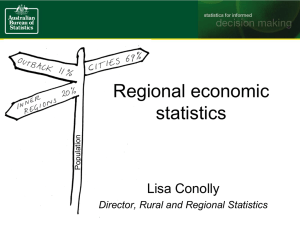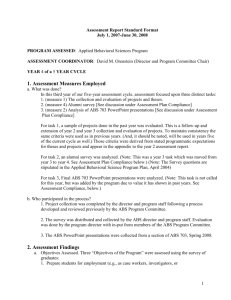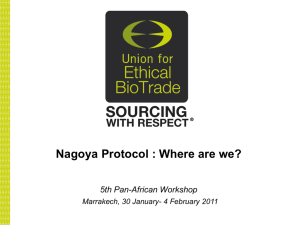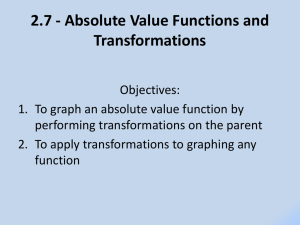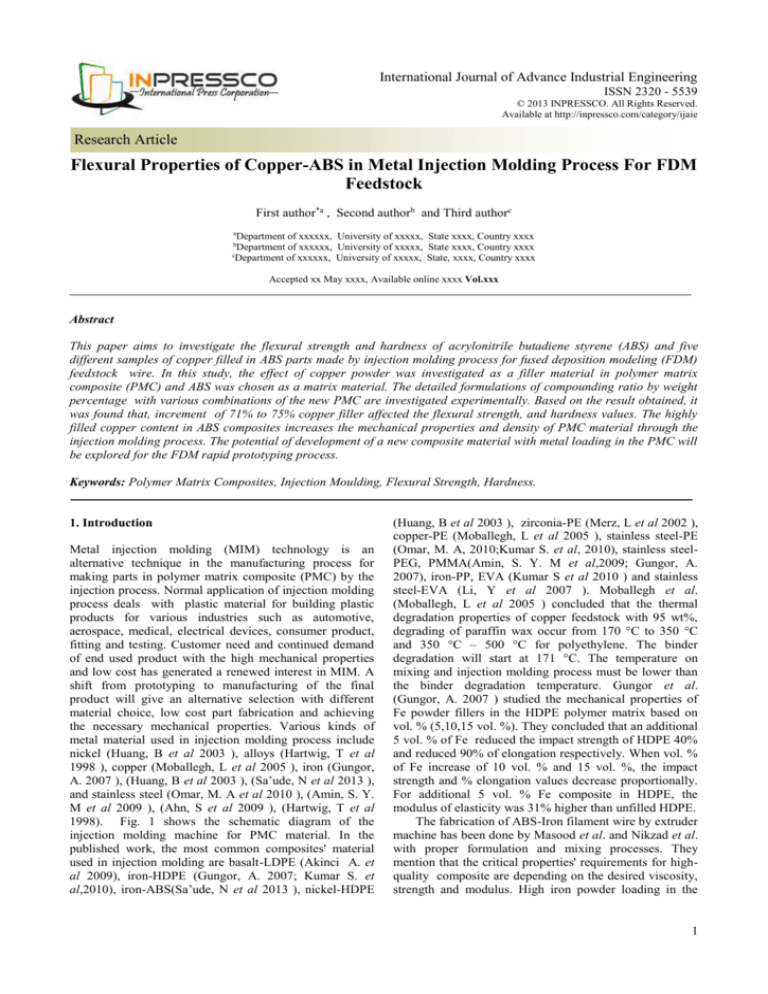
International Journal of Advance Industrial Engineering
ISSN 2320 - 5539
© 2013 INPRESSCO. All Rights Reserved.
Available at http://inpressco.com/category/ijaie
Research Article
Flexural Properties of Copper-ABS in Metal Injection Molding Process For FDM
Feedstock
First author*a , Second authorb and Third authorc
a
Department of xxxxxx, University of xxxxx, State xxxx, Country xxxx
Department of xxxxxx, University of xxxxx, State xxxx, Country xxxx
c
Department of xxxxxx, University of xxxxx, State, xxxx, Country xxxx
b
Accepted xx May xxxx, Available online xxxx Vol.xxx
Abstract
This paper aims to investigate the flexural strength and hardness of acrylonitrile butadiene styrene (ABS) and five
different samples of copper filled in ABS parts made by injection molding process for fused deposition modeling (FDM)
feedstock wire. In this study, the effect of copper powder was investigated as a filler material in polymer matrix
composite (PMC) and ABS was chosen as a matrix material. The detailed formulations of compounding ratio by weight
percentage with various combinations of the new PMC are investigated experimentally. Based on the result obtained, it
was found that, increment of 71% to 75% copper filler affected the flexural strength, and hardness values. The highly
filled copper content in ABS composites increases the mechanical properties and density of PMC material through the
injection molding process. The potential of development of a new composite material with metal loading in the PMC will
be explored for the FDM rapid prototyping process.
Keywords: Polymer Matrix Composites, Injection Moulding, Flexural Strength, Hardness.
1. Introduction
Metal injection molding (MIM) technology is an
alternative technique in the manufacturing process for
making parts in polymer matrix composite (PMC) by the
injection process. Normal application of injection molding
process deals with plastic material for building plastic
products for various industries such as automotive,
aerospace, medical, electrical devices, consumer product,
fitting and testing. Customer need and continued demand
of end used product with the high mechanical properties
and low cost has generated a renewed interest in MIM. A
shift from prototyping to manufacturing of the final
product will give an alternative selection with different
material choice, low cost part fabrication and achieving
the necessary mechanical properties. Various kinds of
metal material used in injection molding process include
nickel (Huang, B et al 2003 ), alloys (Hartwig, T et al
1998 ), copper (Moballegh, L et al 2005 ), iron (Gungor,
A. 2007 ), (Huang, B et al 2003 ), (Sa’ude, N et al 2013 ),
and stainless steel (Omar, M. A et al 2010 ), (Amin, S. Y.
M et al 2009 ), (Ahn, S et al 2009 ), (Hartwig, T et al
1998). Fig. 1 shows the schematic diagram of the
injection molding machine for PMC material. In the
published work, the most common composites' material
used in injection molding are basalt-LDPE (Akinci A. et
al 2009), iron-HDPE (Gungor, A. 2007; Kumar S. et
al,2010), iron-ABS(Sa’ude, N et al 2013 ), nickel-HDPE
(Huang, B et al 2003 ), zirconia-PE (Merz, L et al 2002 ),
copper-PE (Moballegh, L et al 2005 ), stainless steel-PE
(Omar, M. A, 2010;Kumar S. et al, 2010), stainless steelPEG, PMMA(Amin, S. Y. M et al,2009; Gungor, A.
2007), iron-PP, EVA (Kumar S et al 2010 ) and stainless
steel-EVA (Li, Y et al 2007 ). Moballegh et al.
(Moballegh, L et al 2005 ) concluded that the thermal
degradation properties of copper feedstock with 95 wt%,
degrading of paraffin wax occur from 170 °C to 350 °C
and 350 °C – 500 °C for polyethylene. The binder
degradation will start at 171 °C. The temperature on
mixing and injection molding process must be lower than
the binder degradation temperature. Gungor et al.
(Gungor, A. 2007 ) studied the mechanical properties of
Fe powder fillers in the HDPE polymer matrix based on
vol. % (5,10,15 vol. %). They concluded that an additional
5 vol. % of Fe reduced the impact strength of HDPE 40%
and reduced 90% of elongation respectively. When vol. %
of Fe increase of 10 vol. % and 15 vol. %, the impact
strength and % elongation values decrease proportionally.
For additional 5 vol. % Fe composite in HDPE, the
modulus of elasticity was 31% higher than unfilled HDPE.
The fabrication of ABS-Iron filament wire by extruder
machine has been done by Masood et al. and Nikzad et al.
with proper formulation and mixing processes. They
mention that the critical properties' requirements for highquality composite are depending on the desired viscosity,
strength and modulus. High iron powder loading in the
1
First author’s name et al
International Journal of Advance Industrial Engineering, Vol., No. (June 2013)
ABS and Nylon will lead to dispersion issues, and the
viscosity will increase perpendicular with increment of
metal powder in PMC material. Nowadays, application of
MIM material requires enhanced and higher mechanical
properties of the extrusion process. Pure metal is
unsatisfied with deposit through the extrusion mould
because of higher melting temperature and viscosity.
Nevertheless, there are limited data/research available
particularly dealing with the MIM of the PMC copper
through the extrusion process. MIM with highly filled
metal powder in the polymer matrix may offer the
possibility of introducing new composite material in the
extrusion process. Fig.1 shown the schematic diagram of
the injection moulding machine for PMC material. The
aim of this study is to investigate the characteristic of
flexural properties of the copper-ABS composite parts
produced by the injection molding process. The research
focuses on developing a proper formulation and mixture
procedure of constituent materials for obtaining the
homogeneous condition. The optimum composition of
mixing ratio of constituent material was made by an
injection molding process for flexural and hardness tests.
Fig.1 Schematic diagram of the injection molding machine
for PMC material
In this study, two main types of constituent materials were
used to develop the new composite material. The first
material, used as the matrix, is the ABS thermoplastic
powder with lower melting temperature approximately
270°C, flexible and suitable material for extrusion process.
Results will be presented for mechanical properties,
including, flexural strength and hardness test. The copper
particle was mixed with the ABS material as binder
content to form the composite in Brabender mixer
machine. An important issue is a viscosity of the
composite material through the extrusion process. Due to
the high powder loading of copper in the ABS matrix, the
viscosity of the composite increases perpendicular with an
increment of iron powder. Table I show the characteristic
of copper, ABS, surfactant materials and five(5) sample
PMC compounding with the different density value.
Therefore, additive's material is needed in order to control
the melts flow behavior during an extrusion process.
2. Experimental
The ABS material is supplied by Dutatek Sdn Bhd
(Selangor, Malaysia). The density of ABS was 1.03 g/cm3
and melting temperature 266 ºC. ABS materials are
environmental friendly material because they are
completely recyclable. Fig. 2 shows the ABS material
used in the injection process. The copper powder is
supplied by Saintifik Bersatu Sdn Bhd (Johor, Malaysia).
The chemical composition is 99.9 % copper powder, and
the particles size distribution is 17µm ~ 130 µm
respectively with melting temperature 1080 °C and
specific gravity 9.84 g/cm3. Fig. 3 shows the copper
material used in compounding process and the SEM
images of pure copper powder (300x) with different grain
size distribution in millimeter are shown in Fig. 6. The
distributions of the copper powder, ABS and surfactant
composition are 18% to 24% ABS, 71% to 75 % copper
powder and 5 % to 7% surfactant by weight percentage
(wt.%). A binder material based ABS plastic and
surfactant (S) powder was added as the surfactant agent
for smooth flow of mixture of materials. Firstly, ABS
material was cut into the smallest size with approximately
2 mm - 5 mm in length. After that the ABS materials were
then loaded in Brabender Plastograph mixer, type W50 at
180 oC for compounding process in constant speed. In
order to achieve a homogeneous mixture, the
compounding procedure will be followed. The maximum
volume of the mixer is 55 cm3 per mix approximately with
one to three hour mixing time. Fig. 4 shows the (a)
Brabender mixer, (b) Compounding process of ABS and
copper materials. The PMC compounding were analyzed
by scanning electron microscope(SEM) images to ensure a
homogeneous compounding is achieved for feedstock
preparation. At the end, the surfactant was added into
compounding to reduce the inter particle forces and to
lubricate the powder. The compounding was crushed by
machine to form the pallet with 2 mm – 6 mm in size
approximately. Fig. 5 shows the (a) PMC material after the
Bra bender mixer and (b) PMC material after crushing
process. The feedstock pellet was injection moulded on a
horizontal NP7-1F molding machine to make flexural
strength and hardness test specimens. Table II and Fig. 8
shows the weight percentage ratio of copper, ABS and
surfactant material.
2.1 Injection Molding
The injection machine specification with the screw
diameter 19 mm, injection capacity 14 cm³, injection rate
50 cm³/second and injection pressure 161 MPa. Standard
test specimens were prepared based on ISO 178 for
flexural strength and hardness test. The specific dimension
of the specimen is 80 mm(L) x 10 mm(W) x 4 mm(H).
Zone temperatures consist of five areas, where the nozzle
temperature was 185 oC, front and middle were set to 185
o
C and 180 oC, while for rear 2 and rear 1 was 135 oC and
145 oC. The feeding temperatures were set to 70 oC with
the cooling time is 8 second. Due to a breakdown of the
tempering system, the blends made of the certain ratio
could not be processed at identical settings. The material
was burned inside the barrel screw for homogeneous
mixing two types of materials. In order to prevent the melt
from sticking at the screw, the barrel temperature started
from low to high temperature. Fig. 7 shows, the injection
molding machine used for MIM process.
2
First author’s name et al
International Journal of Advance Industrial Engineering, Vol., No. (June 2013)
By (x, t) = B1 (x, t) + Bentry (x, t) + Bexit (x, t)
B1 (x, t) = |Bs |cosωt − kx + δs
(1)
(2)
Bentry (x, t) = B1 eα1 cos ωt
(3)
x
Please note that the equations must be written in MS word
not in Mathtype
Table 1 Weight Percentage of PMC compounding
Sample
1
2
3
4
5
copper
copper
71
72
73
74
75
ABS
ABS
24
22.5
21
19.5
18
surfactant (wt. %)
surfactant
5
5.5
6
6.5
7
3. Results and Discussion
3.1 Flexural Strength
Flexural testing machine used in this study was Shimadzu
AG-I. The maximum load capacity is 10 KN (Refer to
Fig.9). There was five types of compositions used with
ABS, copper and surfactant material for the flexural
strength specimens made by in the injection moulding
machine. Fig. 10 shows the flexural strength specimen (a)
ABS from injection molding, (b) Copper filled in ABS by
injection moulding. From the results obtained, it was
found that the highest flexural strength of original ABS is
57 MPa. The mixing of 71% copper filled in ABS reduced
the flexural strength to 29 MPa. It was concluded that, an
increment of copper filled in ABS reduced the flexural
strength value. The flexural strength result is shown in Fig.
11. Furthermore, the maximum displacement of ABS is
7.19 mm and the maximum displacement of copper filled
in ABS is from 1.78 mm to 2.56 mm approximately. An
increment of copper filled in ABS was not much different
in maximum displacement(refer to Fig. 12). However,
increment of 71 % - 73% copper filled in ABS increased
the break stress value up to 14 MPa – 22 MPa.
Furthermore, the maximum strain (%) of ABS material is
4.2% and the maximum strain (%) of copper filled ABS is
in range 1.0% to 1.7%. Fig. 13 shown the flexural strength
result on maximum strain (%). The detail flexural strength
results are shown in Table III with different compounding
ratio by weight percentage of ABS, copper and surfactant
material.
3.2 Hardness Test Result
Hardness equipment used in this study was Durometer
Type D (ASTM D2240) from Shore Instrument and
Manufacturing, New York USA. There were five
compositions of mixed ABS, copper and surfactant
material for the hardness specimens made by the injection
molding machine. From the results obtained, it was found
that the max hardness value of pure ABS was 73 Duro.
However, an addition of 72% copper filled in ABS, will
give the maximum hardness value of composite material
of 70 Duro. It was concluded that the hardness value
decreased almost proportionally with increment of copper
filled in ABS material. Fig. 14 shows the hardness results
of various constituents of different weight percentage of
ABS, copper and surfactant material.
Conclusions
A new PMC material has been successfully produced by
injection moulding process and tested for the flexural
strength and hardness. From the different compounding of
the parts made by the injection moulding process, it can be
concluded that flexural properties of injected parts are
greatly influenced by copper filled in ABS material. With
71% to 73% copper filled in ABS increase the break
stress up to 22 MPa compared with pure ABS 7 MPa
approximately. Moreover, it was observed that, 71% to
75% copper filled in ABS give 61 Duros to 70 Duros in
hardness value. From the result obtained, it has shown that
the mechanical properties of PMC material is affected
with adding more copper filled in ABS material. The
suitable material and binder selection, mixing method,
parameter setting on melting temperature, pressure and
cooling time may offer a great potential area for metal
injection molding and the extrusion of wire filament
through extruder.
Acknowledgements
The author wishes to acknowledge the technical advice of
Prof Dr. Syed Masood and Dr. Mostafa Nikzad. This
research was conducted at Industrial Research Institute
Swinburne (IRIS), Faculty of Engineering and Industrial
Sciences, Swinburne University of Technology, Victoria,
Melbourne, Australia.
References
Akinci, A. (2009), Mechanical and morphological properties of
basalt filled polymer matrix composites, Science Journal, 35,
29-32.
Gungor, A. (2007), Mechanical Properties of Iron powder filled
high density polyethylene composites, Journal of Materials
and Design, 28, 1027-1030
Huang, B., Liang, S. and Qu, X. (2003), The Rheology of metal
injection molding, Journal. of Material Processing
Technology, 137, 132-137.
Merz, L., Rath, S., Piotter, V., Ruprecht, R. et. al., (2002),
Feedstock Development for micro powder Injection Molding,
Microsystem Technologies, 8, 129-132.
Moballegh, L., Morshedian, J. and Esfandeh, M. (2005), Copper
injection molding using a thermoplastic binder based on
paraffin wax, Journal of Materials Latters, 59, 2832-2837.
Omar, M. A., Subuki, I., Abdullah, N. and Ismail, M. F. (2010),
The influence of palm stearin content on the rheological
behavior of 316L stainless steel MIM compact, Journal of
Science and Technology, 2(2), 1-14.
3



